The Citroën-Kégresse K1 “Croissant d’Argent” of Louis Audouin-Dubreuil
Since its invention, the automobile has been regarded as a symbol of adventure and freedom. The “Croissant d’Argent”, presented by Léa Goubert, cultural mediator at the Musée des Cordeliers in Saint-Jean-d’Angély, is perhaps the finest embodiment of that spirit. First motor vehicle to cross the Sahara, it unfailingly accompanied its driver, explorer Louis Audouin-Dubreuil. Testament to the bond between man and machine, he chose to keep the vehicle for himself. Over a century after it was built, the “Croissant d’Argent” came back to the spotlight to share its story with visitors of Rétromobile 2025.
For more information: Rediscover the vehicles featured in the exhibition ‘Kégresse, the genius of cruises’
The “Croissant d’Argent”: A Monument in Automotive History
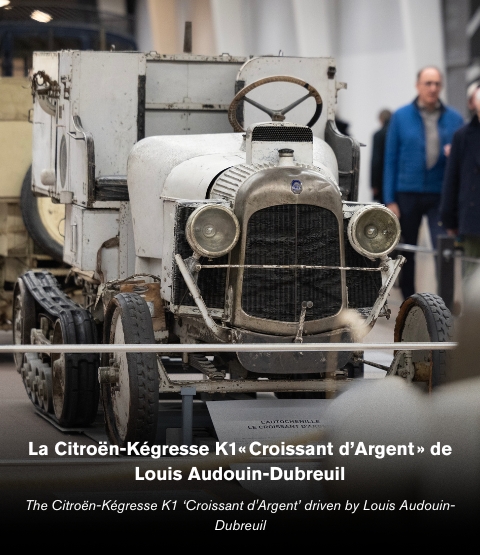
The story of the Citroën-Kégresse K1 “Croissant d’Argent” begins with a meeting: that of Adolphe Kégresse and André Citroën.
A brilliant young engineer who had made a name for himself at the court of Tsar Nicholas II, Adolphe Kégresse returned to France at the onset of the Russian Revolution. His only luggage: a patent for flexible tracks capable of turning any car into an all-terrain vehicle. His invention quickly gained attention — including that of a bold young industrialist: André Citroën. Intrigued, Citroën also saw an opportunity — to prove that the car of tomorrow must be capable of driving on all surfaces.
Following his instincts, he asked Citroën design office engineer Jacques Hinstin to work alongside Kégresse to adapt the system for the brand’s vehicle chassis. While the first prototypes were based on Citroën Type B2 models, the two engineers quickly developed a new model: the K1.
Citroën-Kégresse K1: Mechanical Innovation Serving Marketing Genius
At first glance, the vehicle seems remarkable only for its tracks. But the truth is quite different — the Citroën-Kégresse K1s were packed with innovation and engineering: hybrid tracks and front wheels for both traction and precise steering, a 6-speed gearbox, and a locking differential to avoid getting stuck in sand.
After promising early trials in the Vosges mountains, André Citroën was determined to make a bold media move. With the help of Kégresse and Hinstin, and the support of explorers Georges-Marie Haardt and Louis Audouin-Dubreuil, he organized the first-ever motorized crossing of the Sahara by automobile convoy.
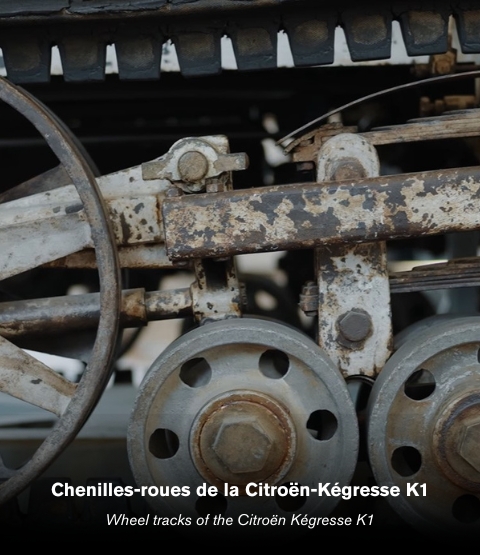
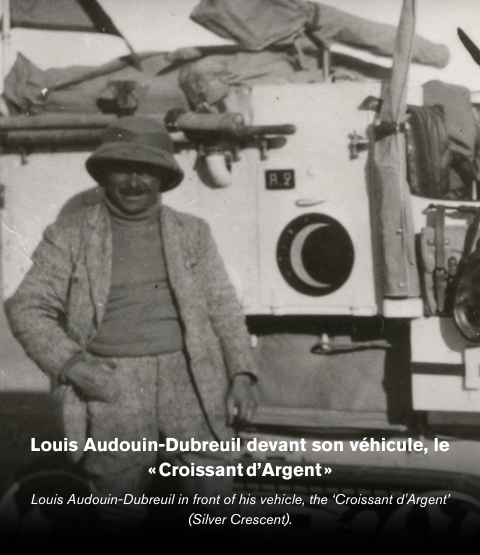
Citroën & Kégresse Take on the Sahara
On December 17, 1922, five Citroën-Kégresse K1s — nicknamed “Scarabée d’Or” (Golden Scarab), “Croissant d’Argent” (Silver Crescent), “Tortue Volante” (Flying Turtle), “Bœuf Apis”, and “Chenille Rampante” (Creeping Caterpillar) — departed the Algerian town of Touggourt and headed into the vast Sahara.
The landscapes changed constantly: from the rugged Hoggar mountains to the arid plains of the Tanezrouft and finally the Malian savannah. As in all true adventures, challenges were never far: mechanical issues (frequent engine overheating, broken track pads, vehicle rollovers) gave way to sandstorms and prairie fires. During this journey, the Croissant d’Argent, driven by Louis Audouin-Dubreuil, played a vital role. Beyond coordinating stops and navigation, the vehicle also scouted ahead, towed fuel and spare parts, and occasionally served as a mobile repair station.
On January 7, 1923 — after 21 days of travel and only a single day behind schedule — the five vehicles reached their destination: Timbuktu.
Also to discover: One Vehicle, One Story – the 1903 Mercedes Simplex 60HP “Roi des Belges”
An Expedition Worth a Mass
Following the feat, it took another 8 months for the explorers to return to Paris. The delay was due partly to logistical and diplomatic constraints — but also to the will of André Citroën himself. During this time, the founder of the brand orchestrated one of the very first large-scale marketing campaigns in the history of the automobile industry.
Upon their arrival at Gare de Lyon, the explorers — joined by Citroën and Kégresse — were welcomed with a hero’s ovation by the crowd and the press. Newspaper reports, a documentary film, and even an exhibition at the Louvre ensured no one in France could ignore what had just been achieved. It was a masterstroke of marketing that boosted the brand’s global reputation and highlighted the innovation and reliability of Citroën vehicles. But Citroën wasn’t done. Riding high on this success, and with the support of the French government, he envisioned something even grander: a trans-African expedition from Algeria to Madagascar.
The idea of the “Croisière Noire” was born.
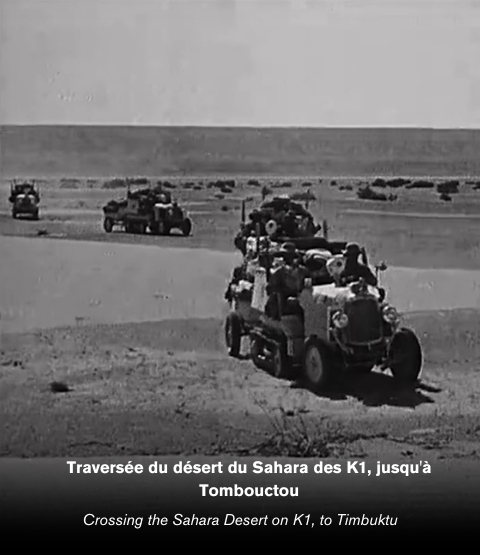
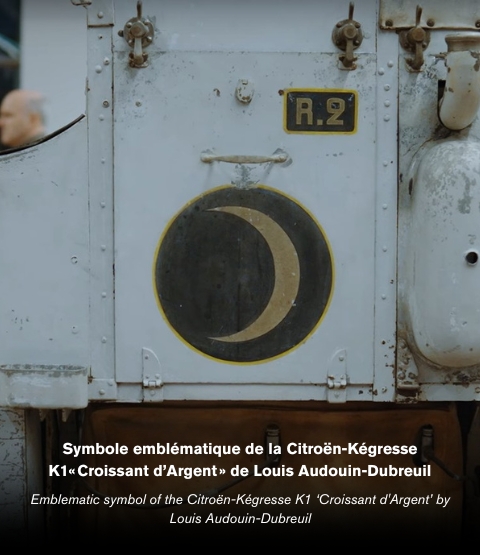
From Desert Pioneer to Enduring Symbol
The Croissant d’Argent would not take part in this next adventure. Replaced by a more modern P4T model, it was kept by Louis Audouin-Dubreuil as a personal relic. In 1940, the vehicle was entrusted to the city of Saint-Jean d’Angély — the explorer’s birthplace — and later joined the collection of the Musée des Cordeliers. In 2025, this iconic vehicle returns to the public eye for a special exhibition dedicated to Adolphe Kégresse, reuniting with its expedition sibling, the Scarabée d’Or, at Rétromobile 2025. On this occasion, it is awarded the Rétromobile Preservation Trophy in the Pre-War category.
Images that tell its story...
Admire the history of this vehicle through unique photographs!





